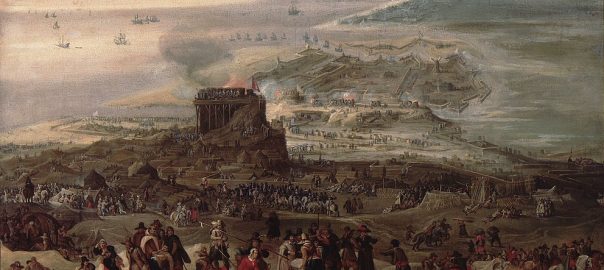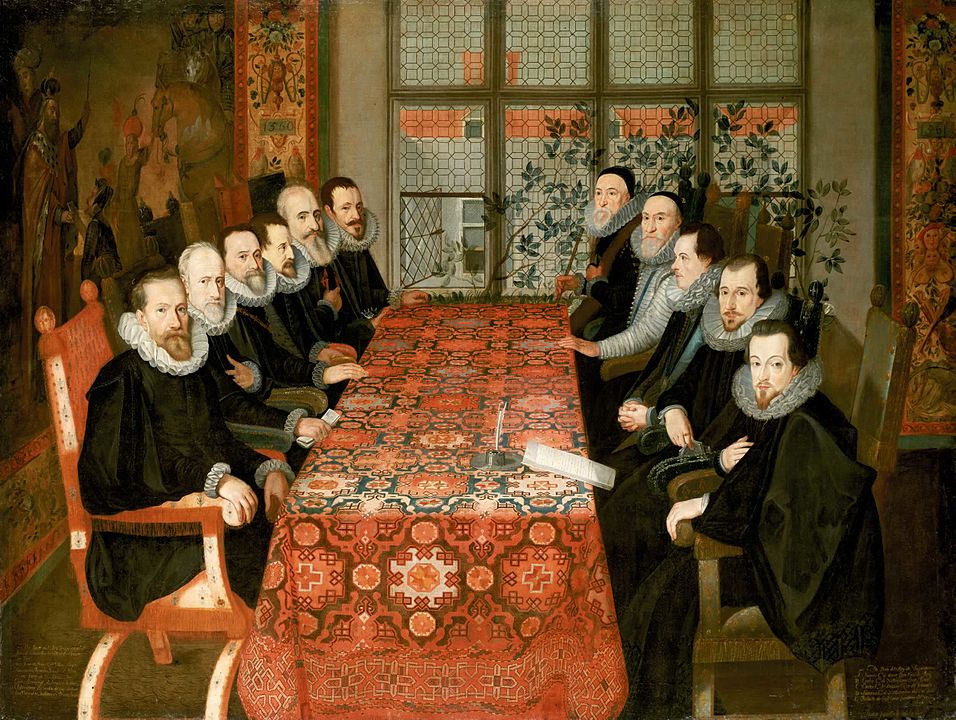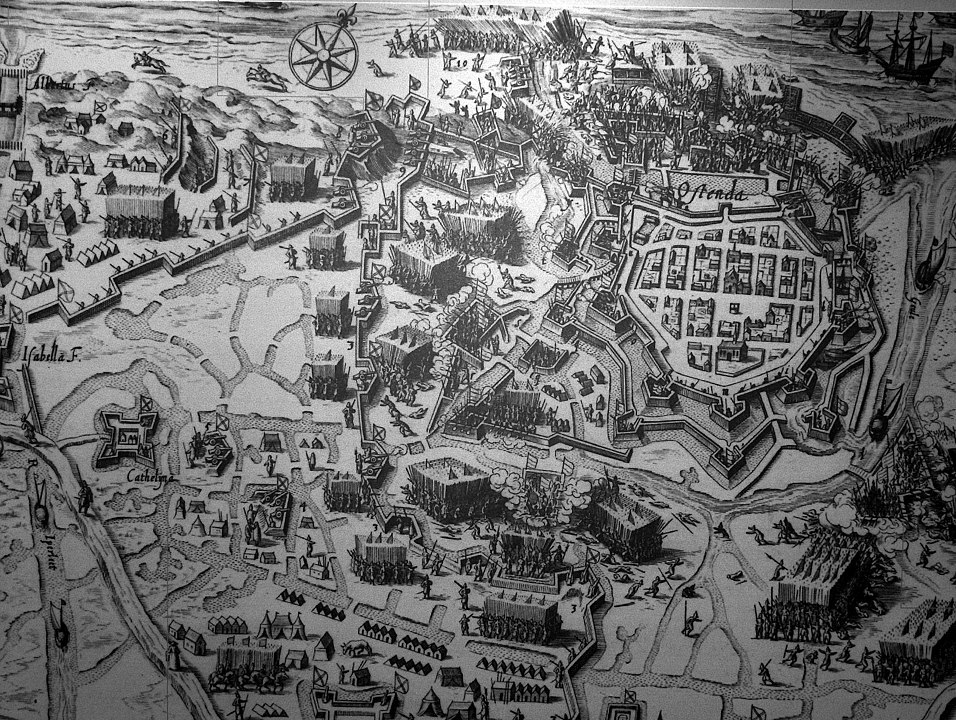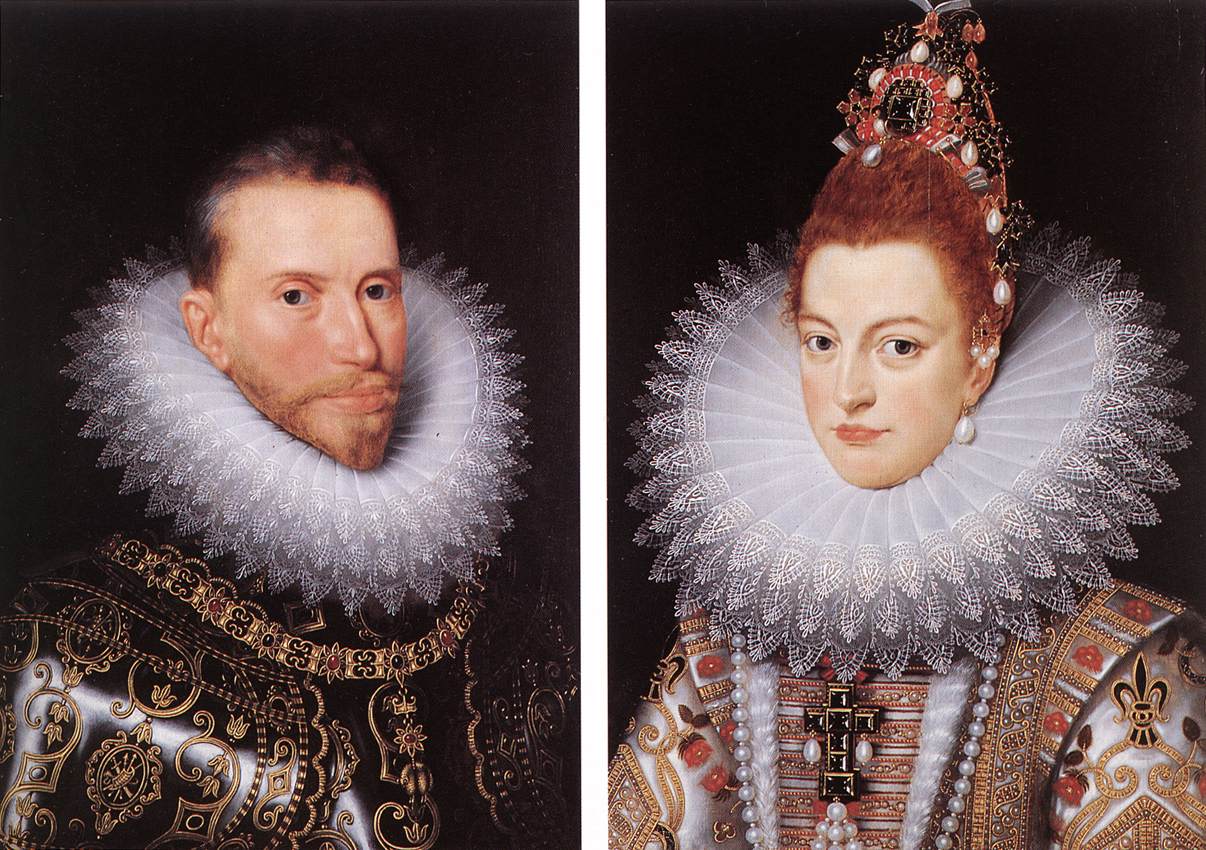I noted yesterday that one of the early moves made by England’s new monarch, James I, after his accession to the throne was to pursue a peace policy toward Spain. In Madrid, James’s counterpart Philip III was more than ready for this. Both kings were relatively young and had followed predecessors with lengthy reigns who had become stuck into the dynamics of an intense competition that had both geopolitical and some religious roots. James’s rise to the English throne gave Philip a good pretext to send to London emissaries to test the waters for peace; and since Spain was still engaged in 1603 in a lengthy, draining, and very expensive battle with the Dutch in Ostend, Philip was pretty determined that his peace overture should succeed… Which it did, in August 1604.
Here’s how it all happened and some of the fallout from this seismic shift in regional (and also inter-imperial) politics.
Elizabeth had died on March 24, 1603 and after careful orchestrations by Robert Cecil James I was crowned in London in late July. By then, the first Spanish special emissary Juan de Tassis had already arrived in London. In mid-May a full Spanish/Habsburg delegation arrived in London. Significantly it contained equal numbers of representatives of Spain itself and of the nominally semi-autonomous “Spanish Netherlands”, that is, the governing apparatus that was seeking to preserve as much Catholic/Habsburg rule in the Low Countries as was still possible after the creation of the determinedly Protestant “Dutch Republic”– three, from each of those. On the English side, the peace delegation was headed by Robert Cecil (naturally), and included four other nobles.
By August 28, the negotiators had reached agreement on the Treaty of London, which per English-WP included essentially the following terms. The English agreed:
- to end the acts of piracy against Spanish (which then also included Portuguese) shipping worldwide that over preceding decades had proved such a boon for the English monarch’s purse and the wealth of England in general;
- to allow Spanish ships to sail freely in the English Channel and to use the ports of England as they needed (up to a point) to support their continuing battles against the Dutch; and
- to end the support that London had given since 1585 to the Dutch in their fight against Spain.
And in return, London got the Spanish side to agree to end all attempts to effect a Catholic Restoration in the British Isles– though actually, no such restoration appeared at all imminent in 1604.
English-WP notes that:
To the English public the treaty was highly unpopular, viewing it as a “humiliating peace”. They felt that the King had deserted their ally the Netherlands in order to appease the Spanish, and it made James I “monumentally unpopular”. Noel Caron, ambassador of the United Provinces to London, wrote that “no promulgation was ever received in London with more coolness, yes—with more sadness.” As such no public celebrations were held in England after the conclusion of the agreement… The English delegation, however, considered the treaty with Spain a diplomatic victory which gave the English “peace with honour”. Gold and silver medals designed by Nicholas Hilliard were struck to commemorate the peace.
The peace agreement was well received in Spain.
As I mentioned above, one of the big factors that had propelled Philip into his peace overture was the continuing high cost that his siege of the Dutch fortress at Ostend was imposing on his empire. That siege had been running since July 1601 and it continued after the conclusion of the Treaty of London in August 1604. But the Dutch contingent in the fortress could not hold out much longer. Plus, on August 19 the Dutch had (re-)captured from the Spanish a fort at Sluis, in Zeeland province; and that made it less important for them to hang on to Ostend at all costs.
So on September 20, the Dutch commander in Ostend surrendered the city to the besieging Spanish forces. Under the terms of the surrender the remaining Dutch forces, who numbered between 3,000 and 4,000, “marched out with flags flying and drums beating and were allowed to go to Flushing without harm.”
WP continues:
At this point the Spaniards and their empire troops had lost between 60,000 and 70,000 men in the fighting. The Dutch and their allies had lost in the region of 30,000 to 40,000; records state that nearly 1,000 healthy soldiers were needed every month to replace the injured, dead and sick.
After the surrender, the Spanish army entered a completely devastated city that shocked many; Isabella [Philip’s sister, who was co-ruler of Spanish Netherlands along with another sibling] wept at the desolation. Three years, two months and two weeks of siege under almost constant fire of artillery as well as defence efforts to rebuild the walls at the expense of the buildings had left Ostend but a wasteland of rubble.
(The banner image above is part of a painting of the Siege of Ostend by the Flemish painter Peter Snayers.)
The lengthy campaign that Philip had had to wage to capture Ostend had a high cost not only in manpower but also financially, helping to drive Spain once again toward a soon-to-follow bankruptcy.
The repercussions that the events of 1604 had on the inter-imperial balance were also notable. If the Dutch had earlier hoped they could rely on having a stable, long-term, anti-Catholic alliance with the English, both in the English Channel and further afield, then the Treaty of London disabused them of those hopes. Now, instead of these two emerging global expeditionary powers acting in concord as a new “Protestant world power”, they acted as scrappily toward each other as they did to the Spanish/Portuguese interests– and all non-European actors– around the world. Perhaps that outcome should have been foreseen a couple of years earlier from the fact that once the merchants and investors in London and Amsterdam had decided to make a big wager on effecting a major disruption of the Portuguese trading empire in the Indian Ocean, the adventurers in each of the two cities had decided to proceed with their plans separately, rather than together.



